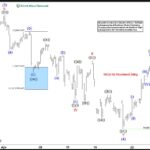
Remember Mario Draghi’s “fallen angel” demons?
Back in January, the ECB liquidated its entire position in Steinhoff after the company’s bonds plunged following a high profile accounting scandal.
That episode was embarrassing for the ECB to the extent it laid bare the inherent dangers in indiscriminately buying up ostensibly “safe” IG corporate bonds. But perhaps more importantly, it raised questions about what would happen to the € credit market in the event a broad-based economic decline were to trigger a mass ratings migration, forcing the ECB to choose between holding a bunch of junk bonds on its books or becoming an active seller of debt that was already under pressure, potentially exacerbating the situation.
If the ECB’s purchases of corporate debt were effectively keeping credit spreads from repricing wider to reflect idiosyncratic risk, well then what would happen if the ECB became an active seller?
The applicable language in the CSPP guidelines for downgraded debt actually changed in and around the Steinhoff episode. Note the following screengrab from the central bank’s CSPP guidelines webpage:

That didn’t used to say that. It used to say only this:
The Eurosystem is not required to sell its holdings in the event of a downgrade below the credit quality rating requirement for eligibility.
Well there’s another angle to this same debate. As BofAML’s Barnaby Martin writes in his latest note, ECB QE has seemingly prompted a dramatic increase in the size of the € BBB market, raising questions about what the implications would be for a high yield market that has actually shrunk over the same period in the event of an economic downturn. Here’s Martin:
The QE years in Europe have profoundly altered the structure of the Euro credit market. Not only, on the one side, have they encouraged the more credit-constrained issuers to embrace bond financing, but on the other side the strict eligibility rules of CSPP have motived high-yield companies to deleverage and return to an IG-status, where possible.
The net result of these two themes in Europe is depicted, starkly, in Chart 4. Since the beginning of 2015 (PSPP started in March ’15) the size of the BBB-rated non-financial sector has grown from €450bn to €755bn (66%). Conversely, the size of the Euro highyield market has shrunk from €310bn to €285bn over this period. As a result, this leaves the non-financial BBB-market now 2.5x bigger than the high-yield market in Europe…a ratio not seen since before 2008.














